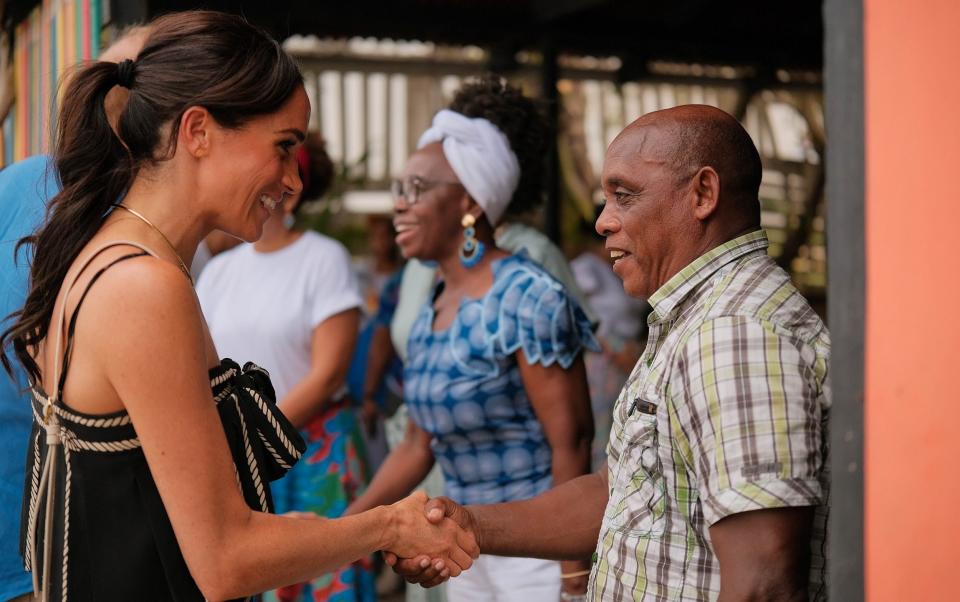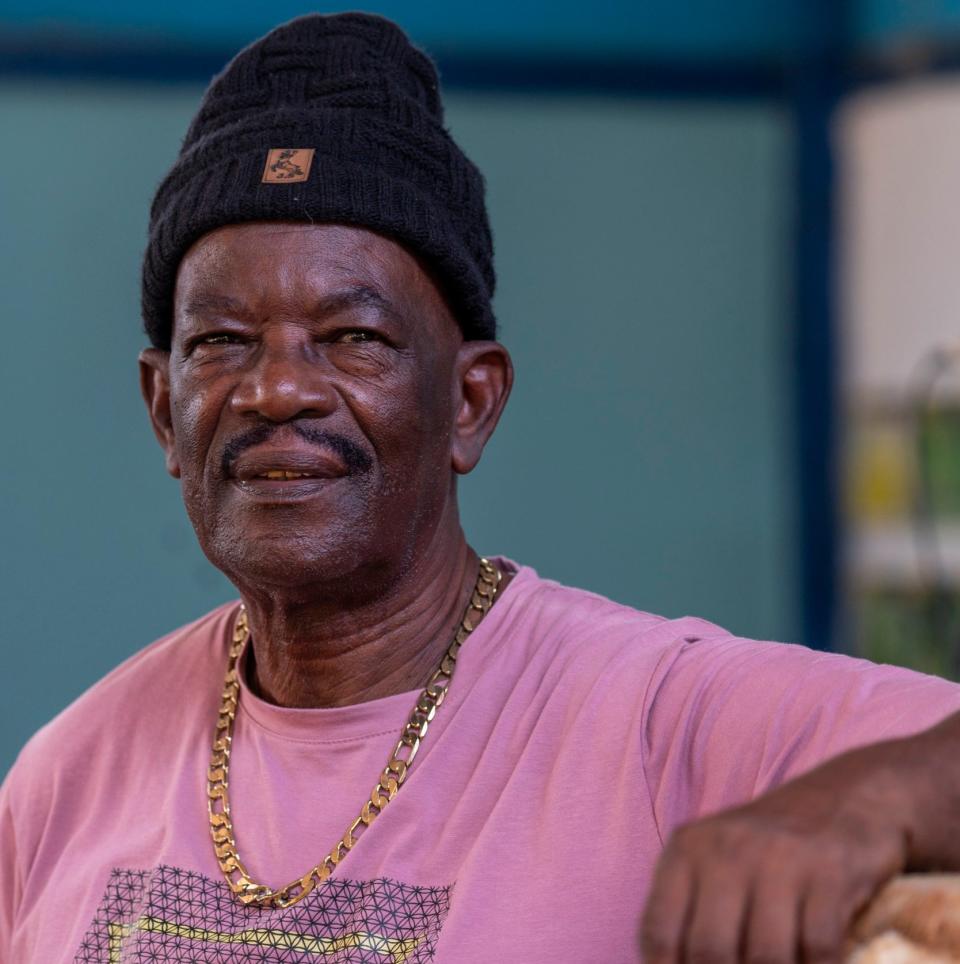Prince Harry should apologise for his family’s role in the slave trade, residents of South America’s first “free town” have said.
On the third day of the Duke and Duchess of Sussex’s quasi royal tour of Colombia, the pair were welcomed to San Basilio’s main square by a group of musicians and children dressed in striking blue and white dresses.
The Duchess wore head-to-toe white, a sunhat and sunglasses, while Harry wore a blue shirt and beige trousers. As they walked into the plaza, the couple stopped to look at the statue of Benkos Bioho, the town’s founder, who is shown reaching out of a stone pillar while clutching a chain.
Harry and Meghan were then treated to a performance by Kombliesa Mi, a local band famous for “rap of Palenque”.
A crowd of locals dressed in bright colours filled up the square behind them.
Ahead of their arrival, locals said they were hopeful Harry would use the moment to apologise for the British crown’s role in the colonial slave trade.

Harry has previously decried the “unjust” system that saw “enslaved people” generate wealth for the Crown, but has stopped short of apologising for his family’s role in the oppressive system.
“I think he does have to [apologise], to free our hearts and our minds and ask for a pardon,” said Segundo Caceres Reyes, 49, president of the town’s local police.
Speaking from outside the force’s turquoise headquarters, he told The Telegraph: “We are in the process of forgiving and forgetting because we know how hard the facts are.”
Hairdresser Elida Canarte Diaz, 33, also said she believes Harry should apologise.
She said: “His ancestors made our ancestors go through terrible times and he can make good faith and repent to show that they don’t agree with what happened before.”
Ms Diaz, who is also a local artisan, is among the group set to welcome Harry and Meghan and show them local crafts.
But she said she would stop short of asking Harry to repent for his family history, saying it would have to come from him.


Francia Márquez, Colombia’s vice-president who invited Harry and the Duchess after watching their Netflix documentary, is one of the world’s leading voices in the call for reparations, setting up a national commission to “repair the historical debt owed”.
Ms Marquez said part of her decision to invite the Duke and Duchess of Sussex to Colombia was because she views them as a joint symbol of resistance and two vital voices against injustice.
“The Duke and Duchess came to Colombia…this is Colombia. This is where the roots of our ancestors and our forefathers are from,” she told an audience at the local drum school, which included members of her own family.
“A community like this cannot be displaced.”
She said it was important to preserve Colombian heritage and the art of drumming symbolises freedom for Black communities around the world.
Earlier, the Sussexes were treated to a booming reception before hearing about the importance of preserving Cartagena’s Afro-Colombian culture.




The Duke and Duchess and Ms Marquez took part in a drum lesson led by the students. Later, they were brought to their feet by a performance from the locals.
Rafael Ramos, the founder of the school, said: “I love seeing Meghan’s big, big smile — I can tell she’s excited!”
The couple were also given a small handcrafted wooden boat from a student, in honour of the coastal city and its beaches.
Edwin José Valdés Torres 25, a drummer in band Kombilesa Mi who will perform for the couple, said: “We’re waiting to see what they leave to us for the development of the community, that would be very good to try to make up for what happened during colonisation and England’s role in the enslavement of our ancestors.”
But, he said, he did not think he should be forced to pay reparations to compensate those who suffered at the hands of colonialism.


He said: “It’s very complicated to ask for something like that, it’s just that they acknowledge their part. It’s not that they have to give x amount of money.”
While some residents, who are known as Palenqueros, were eager to meet Harry and Meghan, several said they did not even know who they were.
Justo Valdés, 70, the lead singer of the band Son Palenque, was on Saturday morning practising the town’s hymn at the cultural centre to welcome the Duke and Duchess to the town.
“Who is Meghan?” he asked The Telegraph, before going on to ask of which country Harry was a prince.
The small town of about 3,500 people around 30 miles south of Cartagena is made up of some 10 roads lined with colourful houses and intricate murals.
Donkeys and chickens roamed the town while locals set up the sound system in the main square on Saturday morning and prepared for the Duke and Duchess’ arrival.
Others walked around with machetes slung over their shoulders as they prepared to harvest yucca, while some locals bent large branches into an archway that Harry and Meghan were expected to walk underneath.
A group of Colombian soldiers and dozens of police officers were in position across the town ahead of Harry and Meghan’s arrival.


About 3,000 police officers were expected to be deployed throughout Cartagena for their protection, while 250 uniformed officers were assigned to protect Ms Marquez and the Duke and Duchess.
On Friday, Harry and Meghan visited a school and then attended a private lunch hosted by Ms Marquez where they discussed creating safe environments for children around the world
Wearing a striking turquoise blue, sleeveless dress by designer Oscar de la Renta, Meghan addressed the audience in Spanish and said she had been enjoying the trip to the South American country.
The Duke and Duchess’ four-day quasi royal tour started in Bogota on Thursday.
The Colombia trip is the couple’s second DIY “royal tour”, following their Nigeria visit, since they quit their roles as working royals in 2020.
Source Agencies
